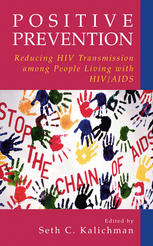

Most ebook files are in PDF format, so you can easily read them using various software such as Foxit Reader or directly on the Google Chrome browser.
Some ebook files are released by publishers in other formats such as .awz, .mobi, .epub, .fb2, etc. You may need to install specific software to read these formats on mobile/PC, such as Calibre.
Please read the tutorial at this link: https://ebookbell.com/faq
We offer FREE conversion to the popular formats you request; however, this may take some time. Therefore, right after payment, please email us, and we will try to provide the service as quickly as possible.
For some exceptional file formats or broken links (if any), please refrain from opening any disputes. Instead, email us first, and we will try to assist within a maximum of 6 hours.
EbookBell Team

4.4
22 reviews"This book is a 'must read' for those interested in the prevention of HIV transmission. It has enough breadth to provide a general overview of 'prevention with positives' and enough detail to satisfy and educate those already working in this area. Clinicians who want to develop or refine their approaches to counseling patients with HIV will find this book valuable." (Gary Marks, PhD., New England Journal of Medicine, August 4, 2005)
The CDC has made a revision in their philosophy underlying recommended prevention techniques to stop the spread of HIV/AIDS. The new approach focuses on "positive prevention", that is, prevention among people living with HIV/AIDS. This important distinction has resulted in the need to reexamine the behaviors around HIV transmission and the approaches to prevention when working within this diverse population.
Positive Prevention is a timely volume containing the latest contributions from the top scholars in the field on preventing the spread of HIV/AIDS. Issues covered include unprotected sex with HIV-positive gay and bisexual men; issues around whether disclosure leads to safer sex; mental health and HIV with young adults; the impact of HIV diagnosis on sexual risk behaviors; interventions in community settings; and more. There is also a important chapter on international perspectives on "positive prevention".
This volume will serve as an invaluable sourcebook for all professionals working in the field of HIV / AIDS prevention.